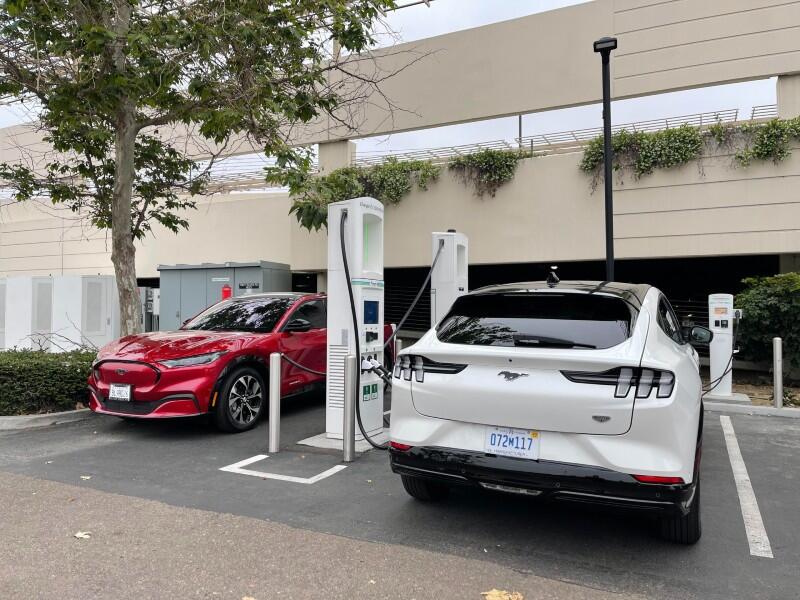In recent years, technology has been rapidly evolving, creating new ways for us to interact with the digital and physical world. One of the most exciting developments is spatial computing. This term encompasses a range of technologies that blend the physical world with digital experiences, transforming how we interact with information, objects, and environments. In this basic explainer, we'll break down what spatial computing is, its key components, applications, and its impact on various industries.
What is Spatial Computing?
Spatial computing refers to the use of technology to interact with and understand the physical space around us. It involves overlaying digital information onto the real world, enabling computers to process and respond to spatial data. This field integrates several advanced technologies, including augmented reality (AR), virtual reality (VR), mixed reality (MR), computer vision, and spatial mapping.
Key Components of Spatial Computing
Augmented Reality (AR):
- Definition: AR overlays digital content on top of the real world through devices such as smartphones, tablets, or AR glasses.
- Examples: Pokémon GO, where digital characters appear in real-world locations, and AR navigation apps that display directions on a phone’s screen.
Virtual Reality (VR):
- Definition: VR creates a fully immersive digital environment that users can explore, typically using VR headsets.
- Examples: VR gaming experiences, virtual tours of real estate, or educational simulations.
Mixed Reality (MR):
- Definition: MR combines elements of AR and VR to create interactive experiences where digital and physical objects coexist and interact in real-time.
- Examples: Microsoft HoloLens, which allows users to interact with 3D holograms in their physical space.
Computer Vision:
- Definition: This technology enables computers to interpret and understand visual information from the world, such as images and videos.
- Examples: Facial recognition systems, object detection in images, and autonomous vehicles.
Spatial Mapping:
- Definition: Spatial mapping involves creating digital representations of physical environments, including their dimensions and features.
- Examples: 3D mapping of interiors for virtual tours, and AR applications that understand the layout of a room to place virtual objects accurately.
Applications of Spatial Computing
Spatial computing has a wide range of applications across various industries. Here are some notable examples:
1. Gaming and Entertainment
- AR Games: Games like Pokémon GO and Harry Potter: Wizards Unite use AR to blend game elements with the real world.
- VR Experiences: VR offers immersive experiences in gaming, virtual concerts, and interactive storytelling.
2. Healthcare
- Surgical Assistance: Surgeons use AR to overlay critical information, such as patient scans, directly onto their field of view during operations.
- Medical Training: VR provides simulated environments for medical students to practice procedures in a risk-free setting.
3. Retail and E-Commerce
- Virtual Try-Ons: AR allows customers to try on clothes, accessories, or makeup virtually before making a purchase.
- Interactive Displays: In-store AR experiences help customers visualize products in their homes or explore detailed product information.
4. Real Estate and Architecture
- Virtual Tours: VR enables potential buyers to explore properties remotely, offering a realistic sense of space and layout.
- Design Visualization: AR and VR tools help architects and designers visualize and modify building designs in real-time.
5. Education and Training
- Interactive Learning: AR and VR create interactive educational experiences, such as virtual field trips and hands-on simulations.
- Skills Training: VR training programs provide realistic scenarios for learning complex skills, from machinery operation to emergency response.
6. Manufacturing and Logistics
- Assembly Assistance: AR provides real-time instructions and overlays for assembly tasks, improving accuracy and efficiency.
- Warehouse Management: Spatial computing helps optimize warehouse layouts and automate inventory management with computer vision.
Benefits of Spatial Computing
- Enhanced User Experience: By integrating digital content with the real world, spatial computing creates more engaging and intuitive interactions.
- Increased Productivity: AR and VR tools can streamline workflows, provide real-time assistance, and reduce errors in various industries.
- Improved Accessibility: Virtual environments make it easier for people with disabilities to interact with digital content and participate in experiences that might be physically challenging.
Challenges and Considerations
- Technical Limitations: Developing spatial computing applications requires advanced hardware and software, which can be costly and complex.
- Privacy and Security: The use of spatial data raises concerns about privacy and data security, particularly when tracking and analyzing users' physical environments.
- User Acceptance: Adoption of spatial computing technologies depends on user comfort and the availability of compelling applications that justify their use.
Future of Spatial Computing
The future of spatial computing looks promising, with continued advancements in technology driving new possibilities. Key trends to watch include:
- Improved Hardware: Development of more compact and powerful AR and VR devices will enhance the user experience.
- Integration with AI: Combining spatial computing with artificial intelligence will lead to smarter, more adaptive systems.
- Expanded Applications: As technology evolves, spatial computing will find applications in even more areas, including remote work, smart cities, and personalized experiences.
Final Thought
Spatial computing represents a significant leap forward in how we interact with technology and our environment. By blending digital and physical worlds, it offers new ways to experience, analyze, and engage with information. From gaming and entertainment to healthcare and education, the applications of spatial computing are diverse and impactful. As technology continues to advance, spatial computing will play an increasingly central role in shaping the future of digital interactions.
FAQ:
1. What exactly is spatial computing?
Spatial computing refers to the integration of digital information with the physical world, enabling technology to interact with and understand the spatial dimensions around us. It involves using technologies like augmented reality (AR), virtual reality (VR), mixed reality (MR), computer vision, and spatial mapping to create immersive and interactive experiences that blend the digital and physical realms.
2. What are the main components of spatial computing?
The main components of spatial computing include:
- Augmented Reality (AR): Overlaying digital information onto the real world via devices such as smartphones, tablets, or AR glasses.
- Virtual Reality (VR): Creating a fully immersive digital environment experienced through VR headsets.
- Mixed Reality (MR): Combining AR and VR elements to allow digital and physical objects to interact in real-time.
- Computer Vision: Enabling computers to interpret visual data from the real world, such as images and videos.
- Spatial Mapping: Creating digital representations of physical spaces, including their dimensions and features.
3. How is spatial computing used in gaming?
In gaming, spatial computing enhances user experiences through:
- Augmented Reality Games: Games like Pokémon GO blend digital characters with real-world locations, encouraging players to interact with their surroundings.
- Virtual Reality Games: VR games provide fully immersive environments, allowing players to engage with and explore virtual worlds.
4. Can spatial computing improve healthcare?
Yes, spatial computing can significantly enhance healthcare through:
- Surgical Assistance: AR overlays critical information, such as patient scans, directly onto the surgeon's view during procedures.
- Medical Training: VR offers simulated environments for medical students to practice and learn surgical techniques or medical procedures.
5. What are some practical applications of spatial computing in retail?
In retail, spatial computing can be used for:
- Virtual Try-Ons: Allowing customers to try on clothes, accessories, or makeup virtually before making a purchase.
- Interactive Displays: Providing AR experiences in stores to help customers visualize products in their homes or access detailed product information.
6. How does spatial computing impact real estate and architecture?
Spatial computing impacts real estate and architecture by:
- Virtual Tours: Enabling potential buyers to explore properties remotely through VR, giving a realistic sense of space and layout.
- Design Visualization: Helping architects and designers visualize and modify building designs in real-time using AR and VR tools.
7. What benefits does spatial computing offer?
Spatial computing offers several benefits, including:
- Enhanced User Experience: Creating more engaging and intuitive interactions by blending digital content with the real world.
- Increased Productivity: Streamlining workflows and providing real-time assistance to reduce errors and improve efficiency.
- Improved Accessibility: Making digital content and experiences more accessible to people with disabilities.
8. What challenges are associated with spatial computing?
Challenges include:
- Technical Limitations: Advanced hardware and software requirements can be costly and complex.
- Privacy and Security: Concerns about tracking and analyzing users' physical environments and protecting personal data.
- User Acceptance: Adoption depends on user comfort with new technology and the availability of compelling applications.
9. How is spatial computing expected to evolve in the future?
The future of spatial computing may include:
- Improved Hardware: Development of more compact, powerful, and affordable AR and VR devices.
- Integration with AI: Combining spatial computing with artificial intelligence for smarter, more adaptive systems.
- Expanded Applications: Broader use in areas such as remote work, smart cities, and personalized digital experiences.
10. What industries are most likely to benefit from spatial computing?
Industries that stand to benefit significantly from spatial computing include:
- Gaming and Entertainment: Enhanced immersive experiences and interactive content.
- Healthcare: Advanced surgical tools and training simulations.
- Retail and E-Commerce: Virtual try-ons and interactive product displays.
- Real Estate and Architecture: Virtual property tours and real-time design visualization.
- Education and Training: Interactive learning environments and realistic training scenarios.
11. How does spatial computing relate to other emerging technologies?
Spatial computing is closely related to other emerging technologies such as:
- Artificial Intelligence (AI): Enhances spatial computing by providing intelligent responses and interactions within AR and VR environments.
- Internet of Things (IoT): Integrates with spatial computing to create smart environments that interact with digital systems.
- 5G Connectivity: Supports high-speed data transfer and low latency, improving the performance of spatial computing applications.
12. What are some examples of spatial computing devices?
Examples of spatial computing devices include:
- AR Glasses: Such as Microsoft HoloLens or Google Glass, which overlay digital information onto the real world.
- VR Headsets: Like Oculus Rift, HTC Vive, or PlayStation VR, which provide immersive digital environments.
- Spatial Mapping Tools: Devices and software used to create 3D models of physical spaces, such as LiDAR scanners.
Get in Touch
Website – https://www.webinfomatrix.com
Mobile - +91 9212306116
WhatsApp – https://call.whatsapp.com/voice/9rqVJyqSNMhpdFkKPZGYKj
Skype – shalabh.mishra
Telegram – shalabhmishra
Email - info@webinfomatrix.com

.jpg)





 English (US) ·
English (US) ·